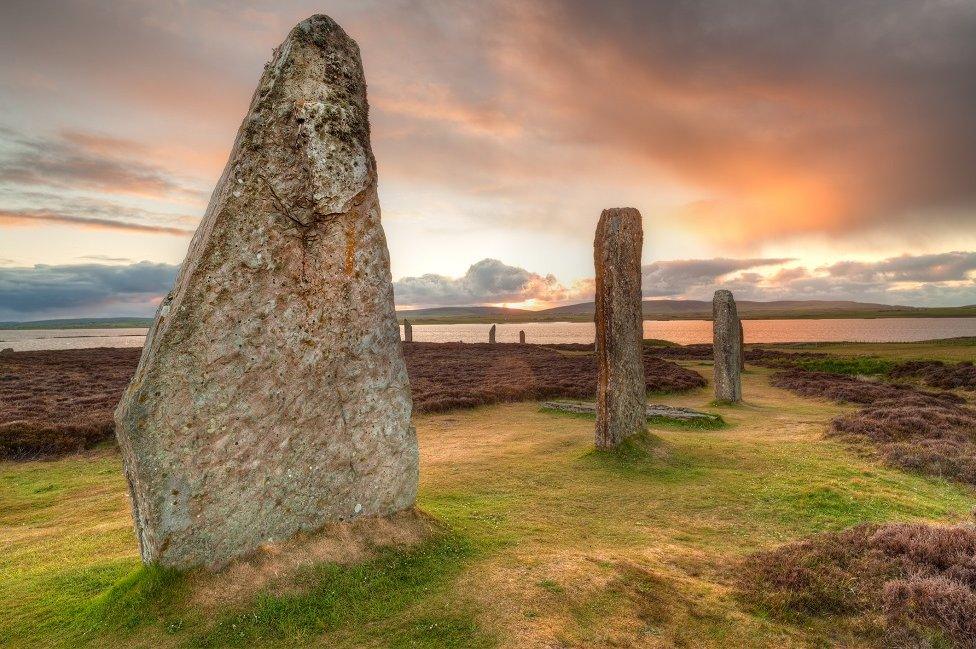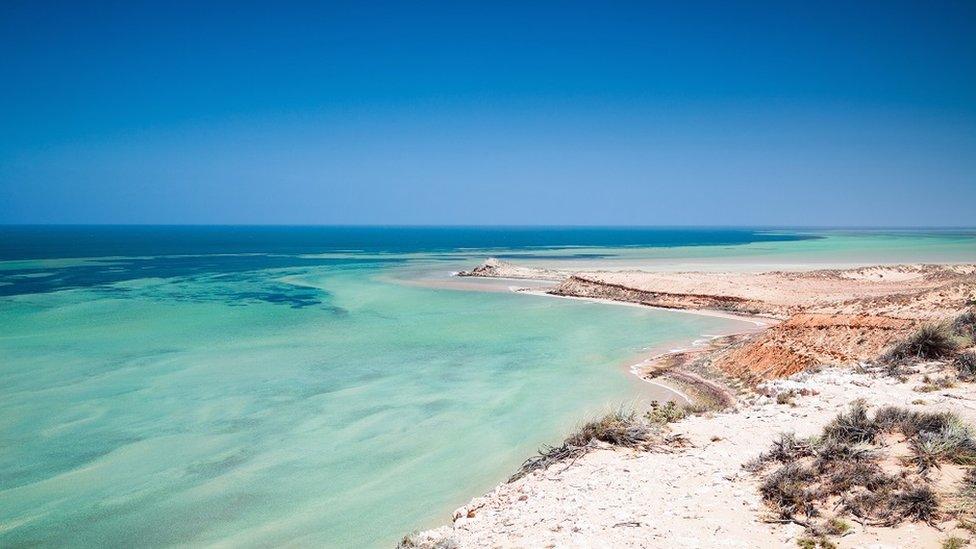Climate change tests on Orkney's Neolithic sites
- Published

The Ring of Brodgar is part of the "Heart of Neolithic Orkney" alongside Skara Brae Neolithic village
International scientists are meeting in Orkney to develop a system for assessing the risks to world heritage sites posed by climate change.
The Climate Change Vulnerability Index (CVI) would allow sites to be assessed over a few days for issues like rising sea levels and warmer temperatures.
It is being tested at the "Heart of Neolithic Orkney" which includes the Ring of Brodgar and Skara Brae.
The findings will be presented to the Unesco world heritage committee.
The survey work in Orkney will be the first time the CVI has been tested on a cultural World Heritage site.
'Pool expertise'
Shark Bay in western Australia - a natural site containing the world's largest and richest sea grass beds - has already been assessed.
Ewan Hyslop from Historic Environment Scotland (HES) said: "Climate change poses a number of very real threats to heritage sites, not only here in Scotland but throughout the world, and we're very pleased to have been asked by the International Council on Monuments and Sites (Icomos) climate change and heritage working group to pilot the CVI assessment tool in Orkney.
"At HES, we've already undertaken significant work to research the climate change risk our historic sites face, as outlined in our climate change risk assessment report which was published last year.
"This workshop offers an important opportunity to further enhance our knowledge and pool expertise by working collaboratively with our local, national and international partners to face this shared challenge, and take a positive step forward to help protect world heritage sites across the globe."

The Orkney site became a world heritage site in 1999
The Heart of Neolithic Orkney became a World Heritage site in 1999 and consists of the Ring of Brodgar, Stones of Stenness, Maeshowe and Skara Brae.
Unesco describes it as "unquestionably among the most important Neolithic sites in Western Europe."
More than 30 climate scientists and heritage experts will finalise details of the index before it is presented in Baku, Azerbaijan, in July.
'Growing threat'
Adam Markham, deputy director for climate and energy at the Union of Concerned Scientists (UCS), said "UCS has been at the forefront of identifying the growing threat to World Heritage sites from climate impacts including from sea level rise, extreme weather events, coastal erosion and worsening storm surge.
"From the Statue of Liberty in New York, to Saint Mark's Basilica in Venice, iconic heritage sites the world-over are at risk.
"We're excited to be working with HES and the other partners to pioneer the development of this urgently needed rapid assessment tool to help prioritise and plan climate resilience actions at internationally important sites."

Shark Bay in western Australia has already been assessed